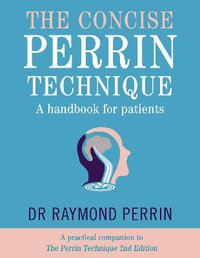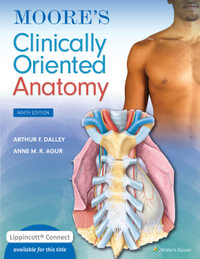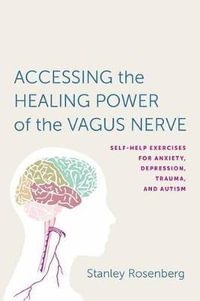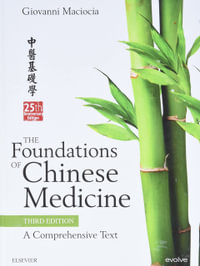Preface To The Fourth Edition ix
Acknowledgements x
Section I: Introduction to movement 1
Chapter 1 Basic units, structure and function: supporting tissues, muscle and nerve 3
Framework and support: the connective tissues 4
Articulations 9
Skeletal muscle 12
Basic units of the nervous system 18
Muscle tone 27
Summary 29
Chapter 2 Movement terminology 31
The anatomical position 32
Planes and axes of movement 33
Structure and movements at synovial joints 34
Group action and types of muscle work 38
Biomechanical principles 41
Summary 49
Chapter 3 The central nervous system: the brain and spinal cord 50
PART I: THE BRAIN 51
Introduction to the form and structure 51
Cerebral hemispheres 56
Basal ganglia 65
Thalamus 66
Hypothalamus and limbic system 67
Brain stem 69
Cerebellum 71
Summary of brain areas: function in movement 73
PART II: THE SPINAL CORD 73
Position and segmentation of the spinal cord 73
Spinal reflex pathways 79
Summary of the functions of the spinal cord 82
Summary 82
Chapter 4 The peripheral nervous system: cranial and spinal nerves 84
Introduction 85
Spinal nerves 86
Peripheral nerves 90
Cranial nerves 92
Autonomic nervous system 96
Summary 99
Section II: Anatomy of movement in everyday living 101
Chapter 5 Positioning movements: the shoulder and elbow 103
Introduction 104
PART I: THE SHOULDER 105
The shoulder (pectoral) girdle 105
The shoulder (glenohumeral) joint 108
Muscles of the shoulder region 109
PART II: THE ELBOW 121
Elbow position and function 121
The elbow joint 121
Muscles moving the elbow 123
Summary of the shoulder and elbow in functional movements 127
Summary 129
Chapter 6 Manipulative movements: the forearm, wrist and hand 130
Introduction 131
Functions of the forearm and wrist 131
The forearm 131
The wrist 134
Functions of the hand 140
Movements of the hand: fingers and thumb 141
Muscles moving the hand: fingers and thumb 144
Types of grip 157
Summary of muscles of the forearm and intrinsic muscles of the hand 160
Summary 161
Chapter 7 Nerve supply of the upper limb 162
Introduction 163
The brachial plexus 163
Terminal branches of the brachial plexus 165
Axillary nerve: shoulder movement 165
Spinal segmental innervation of the upper limb 173
Summary 174
Chapter 8 Support and propulsion: the lower limb 175
Introduction 176
Joints and movements of the pelvis, thigh and leg 176
Muscles of the thigh and leg in support, swing and propulsion 183
Functions of the foot 197
Summary of the lower limb muscles 204
Summary 204
Chapter 9 Nerve supply of the lower limb 206
Introduction 207
Lumbar plexus: position and formation 207
Terminal branches of the lumbar plexus 207
Sacral plexus: position and formation 211
Terminal branches of the sacral plexus 211
Spinal segmental innervation of the lower limb 216
Summary 216
Chapter 10 Upright posture and breathing: the trunk 218
Introduction 219
Upright posture 220
Breathing 230
Pelvic tilt and the pelvic floor 236
Nerve supply of the muscles of the neck and trunk 238
Summary of the muscles of the trunk 239
Summary 239
Section III: Sensorimotor control of movement 241
Chapter 11 Sensory background to movement 243
Somatosensory system 244
Vestibular system 254
Visual system 256
Regulation of posture 258
Summary 259
Chapter 12 Motor control 261
Introduction 262
Spinal mechanisms 262
Descending motor system 267
Planning, co-ordination and motor learning 272
Summary 277
Section IV: Human occupation 279
Chapter 13 Occupational performance skills and capacities 281
Multiple factors in control of occupational performance skills 282
Core positions and patterns of occupational performance skills 286
Summary 300
Chapter 14 Occupational performance 301
Introduction 302
Framework for understanding human occupation 302
Case scenarios 305
PART I 306
Example case scenario 306
Further case scenarios 308
Case scenario 1: Mabel; the ageing process 308
Case scenario 2: Mary; Parkinson’s disease 310
Case scenario 3: John; traumatic brain injury 310
Case scenario 4: Patrick; hand injury 311
Case scenario 5: Christopher; spinal cord injury 311
Case scenario 6: Susan; chronic pain 312
PART II 313
Case scenario 1: Mabel; the ageing process 313
Case scenario 2: Mary; Parkinson’s disease 314
Case scenario 3: John; traumatic brain injury 316
Case scenario 4: Patrick; hand injury 317
Case scenario 5: Christopher; spinal cord injury 318
Case scenario 6: Susan; chronic pain 320
Conclusion 323
References 323
Further reading 324
Appendix I: Bones 326
Appendix II: Segmental nerve supply of muscles 336
Glossary 340
Index 354
Practice note-pad list 365
























